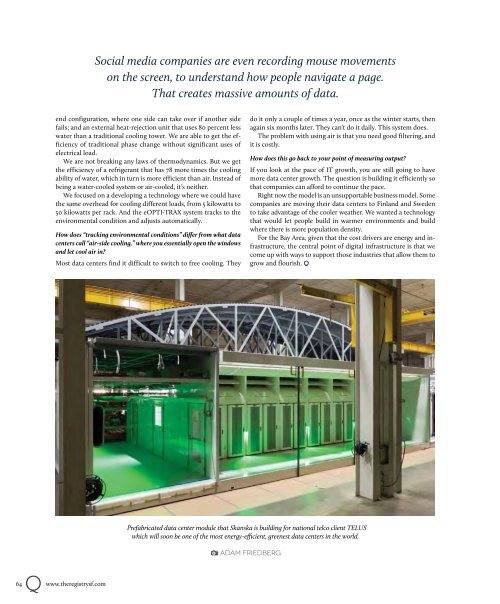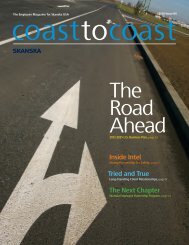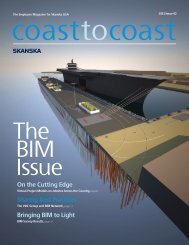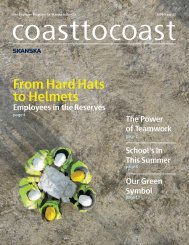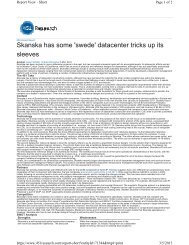You also want an ePaper? Increase the reach of your titles
YUMPU automatically turns print PDFs into web optimized ePapers that Google loves.
end configuration, where one side can take over if another side<br />
fails; and an external heat-rejection unit that uses 80 percent less<br />
water than a traditional cooling tower. We are able to get the efficiency<br />
of traditional phase change without significant uses of<br />
electrical load.<br />
We are not breaking any laws of thermodynamics. But we get<br />
the efficiency of a refrigerant that has 78 more times the cooling<br />
ability of water, which in turn is more efficient than air. Instead of<br />
being a water-cooled system or air-cooled, it’s neither.<br />
We focused on a developing a technology where we could have<br />
the same overhead for cooling different loads, from 5 kilowatts to<br />
50 kilowatts per rack. And the eoPTI-TRAX system tracks to the<br />
environmental condition and adjusts automatically.<br />
How does “tracking environmental conditions” differ from what data<br />
centers call “air-side cooling,” where you essentially open the windows<br />
and let cool air in?<br />
Most data centers find it difficult to switch to free cooling. They<br />
64 Q www.theregistrysf.com<br />
Social media companies are even recording mouse movements<br />
on the screen, to understand how people navigate a page.<br />
That creates massive amounts of data.<br />
do it only a couple of times a year, once as the winter starts, then<br />
again six months later. They can’t do it daily. This system does.<br />
The problem with using air is that you need good filtering, and<br />
it is costly.<br />
How does this go back to your point of measuring output?<br />
If you look at the pace of IT growth, you are still going to have<br />
more data center growth. The question is building it efficiently so<br />
that companies can afford to continue the pace.<br />
Right now the model is an unsupportable business model. Some<br />
companies are moving their data centers to Finland and Sweden<br />
to take advantage of the cooler weather. We wanted a technology<br />
that would let people build in warmer environments and build<br />
where there is more population density.<br />
For the Bay Area, given that the cost drivers are energy and infrastructure,<br />
the central point of digital infrastructure is that we<br />
come up with ways to support those industries that allow them to<br />
grow and flourish. Q<br />
Prefabricated data center module that <strong>Skanska</strong> is building for national telco client TeLUS<br />
which will soon be one of the most energy-efficient, greenest data centers in the world.<br />
Adam Friedberg


